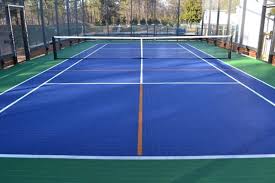Exploring the Costs of Golf Simulators: From Budget to High-End Models

Golf simulators have revolutionized the way enthusiasts and professionals approach the game, providing a convenient and immersive way to practice and play. Whether you’re looking to perfect your swing, enjoy a virtual round with friends, or simply practice in the comfort of your home, a golf simulator can be a worthwhile investment. However, the costs can vary significantly, ranging from a few hundred to tens of thousands of dollars. This article explores the factors influencing golf simulator costs and highlights the range of options available, from budget-friendly models to high-end setups.
Understanding Golf Simulator Costs
The cost of a golf simulator is influenced by several key components, including the technology used, the quality of the software and hardware, additional features, and installation requirements. Here’s a detailed breakdown of these components:
- Hardware Costs:
- Sensors and Cameras: The core technology of a golf simulator involves sensors and cameras that track the ball’s flight, speed, and spin. High-end models use advanced multi-camera systems and infrared sensors that offer precise tracking, which significantly raises the cost.
- Projectors and Screens: A high-resolution projector and impact screen are essential for an immersive experience. Budget models may use lower resolution projectors, while high-end systems utilize 4K projectors with high brightness and contrast ratios, adding to the expense.
- Hitting Mat and Net: Quality hitting mats that replicate real fairway conditions and durable nets to catch the balls are critical. High-end simulators use mats with advanced shock absorption and realistic turf, which are more expensive than basic versions.
- Computers and Processors: To run the simulation software smoothly, a powerful computer is necessary. While budget setups might work with standard personal computers, high-end simulators often require specialized gaming PCs with high-end graphics cards and processors.
- Software Costs:
- Simulation Software: The software is the heart of a golf simulator, offering various courses, practice modes, and analysis tools. High-end software provides more courses, better graphics, and advanced analytics, and thus comes at a higher price.
- Subscription Fees: Some simulators require ongoing subscription fees for access to premium features, additional courses, and online play. These fees can vary widely, impacting the overall cost over time.
- Installation and Setup:
- DIY vs. Professional Installation: Budget models are often designed for DIY installation, while high-end simulators might require professional setup. The cost of professional installation, including room modifications and calibration, can add a significant amount to the overall expense.
- Space Requirements: The space needed for a simulator can influence costs. High-end models often require dedicated rooms with specific dimensions to accommodate all the equipment and ensure an optimal experience.
- Additional Features:
- Integrated Systems: High-end simulators might include integrated systems such as lighting, sound, and environmental controls to enhance the realism of the simulation, increasing the cost.
- Customization: Custom-built enclosures, branded hitting mats, and personalized software options are available at a premium price.
Budget-Friendly Golf Simulators
For those looking to enjoy golf simulation without breaking the bank, there are several budget-friendly options available. These models are designed to provide a satisfactory experience at a fraction of the cost of high-end setups. Here’s what you can expect from budget golf simulators:
- Basic Tracking Technology:
- Budget simulators typically use simpler tracking technologies such as radar or basic camera systems. While not as precise as high-end models, they are sufficient for casual practice and recreational play.
- Standard Projectors and Screens:
- Lower resolution projectors and screens are common in budget setups. These might not offer the same level of visual fidelity but are adequate for most users.
- Affordable Software:
- Budget software usually includes a limited number of courses and fewer practice modes. The graphics may not be as advanced, but the core functionality is present.
- DIY Installation:
- Budget simulators are often designed for easy DIY installation, reducing costs associated with professional setup.
- Space Efficiency:
- These simulators are typically more compact, making them suitable for smaller spaces such as garages or spare rooms.
While budget-friendly models have their limitations, they are an excellent choice for beginners or those with limited space and resources. They provide a gateway to the world of golf simulation without the need for a significant financial commitment.
Mid-Range Golf Simulators
Mid-range golf simulators strike a balance between affordability and performance, offering enhanced features and better technology compared to budget models. These simulators are ideal for serious golfers looking for a more immersive and accurate experience without the high cost of top-tier models.
- Improved Tracking Technology:
- Mid-range simulators often incorporate dual or triple-camera systems and more sophisticated radar technology, offering better accuracy and a more realistic simulation.
- Higher Quality Projectors and Screens:
- These setups usually include HD projectors and high-quality impact screens, providing clearer and more detailed visuals.
- Enhanced Software:
- Mid-range software packages offer more courses, improved graphics, and additional practice modes. They often include basic analytics and performance tracking features.
- Optional Professional Installation:
- While still manageable as a DIY project, mid-range simulators often benefit from professional installation to optimize performance and ensure accurate calibration.
- Moderate Space Requirements:
- These systems typically require more space than budget models but are still manageable within a residential setting.
Mid-range golf simulators offer a significant step up in terms of realism and functionality, making them a popular choice among avid golfers who want a reliable and engaging practice tool.
High-End Golf Simulators
High-end golf simulators represent the pinnacle of golf simulation technology, providing an unparalleled level of accuracy, realism, and immersion. These systems are designed for professional use, serious amateurs, and golf enthusiasts who want the best possible experience.
- Advanced Tracking Systems:
- High-end simulators use cutting-edge technology, such as multi-camera systems, advanced infrared sensors, and high-speed cameras, to capture every detail of the ball’s flight and the player’s swing with exceptional precision.
- Premium Projectors and Screens:
- These simulators feature 4K projectors and premium impact screens that deliver stunning visuals, making it feel like you are playing on a real course.
- Comprehensive Software Packages:
- The software included with high-end simulators offers an extensive range of courses, detailed graphics, and advanced analytics. Features such as swing analysis, shot tracing, and virtual coaching are standard.
- Professional Installation and Customization:
- High-end setups often require professional installation, including room modifications, custom enclosures, and precise calibration. Customization options allow for a tailored experience, matching the user’s specific needs and preferences.
- Dedicated Space:
- These simulators typically require a dedicated room with ample space to accommodate all the equipment and ensure optimal performance. This space might include custom lighting, sound systems, and environmental controls to enhance the realism of the simulation.
- Additional Features:
- Integrated systems for lighting, sound, and environmental controls, as well as options for multiplayer and online play, are common in high-end models. These features create a comprehensive and engaging experience that goes beyond just playing golf.
High-end golf simulators are a significant investment but offer an unmatched level of quality and detail. They are suitable for those who are serious about their game and want to replicate the conditions of a real golf course as closely as possible.
These estimates can vary based on specific models, additional features, and customization options. It’s important to carefully consider your needs, space, and budget when selecting a Top golf simulator.
Conclusion
Golf simulators offer a versatile and engaging way to practice and enjoy golf year-round, regardless of weather or location. From budget-friendly models to high-end setups, there are options available to suit every golfer’s needs and financial constraints.
Understanding the various components that influence the cost of a golf simulator is crucial in making an informed decision. Whether you’re a casual player looking for a fun addition to your home or a serious golfer aiming to improve your game, investing in a golf simulator can be a rewarding experience. By weighing the benefits and costs of different models, you can find the perfect simulator that fits your lifestyle and enhances your love for the game.


